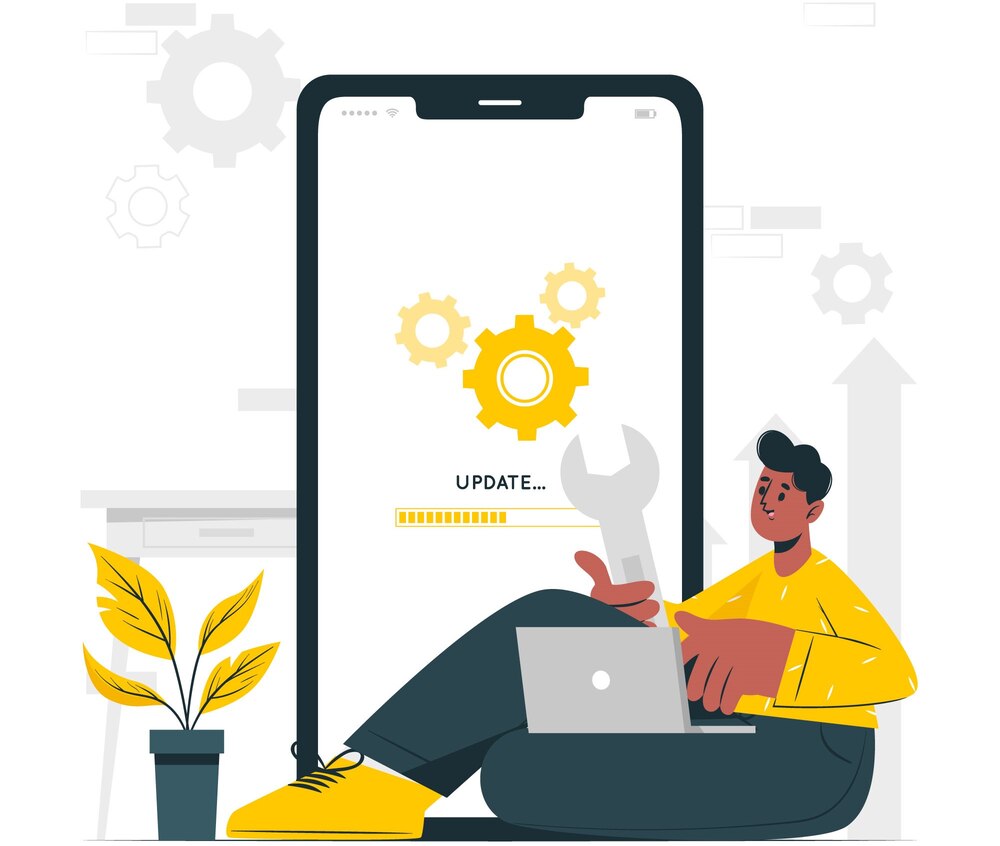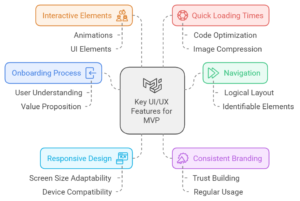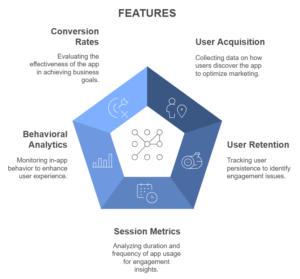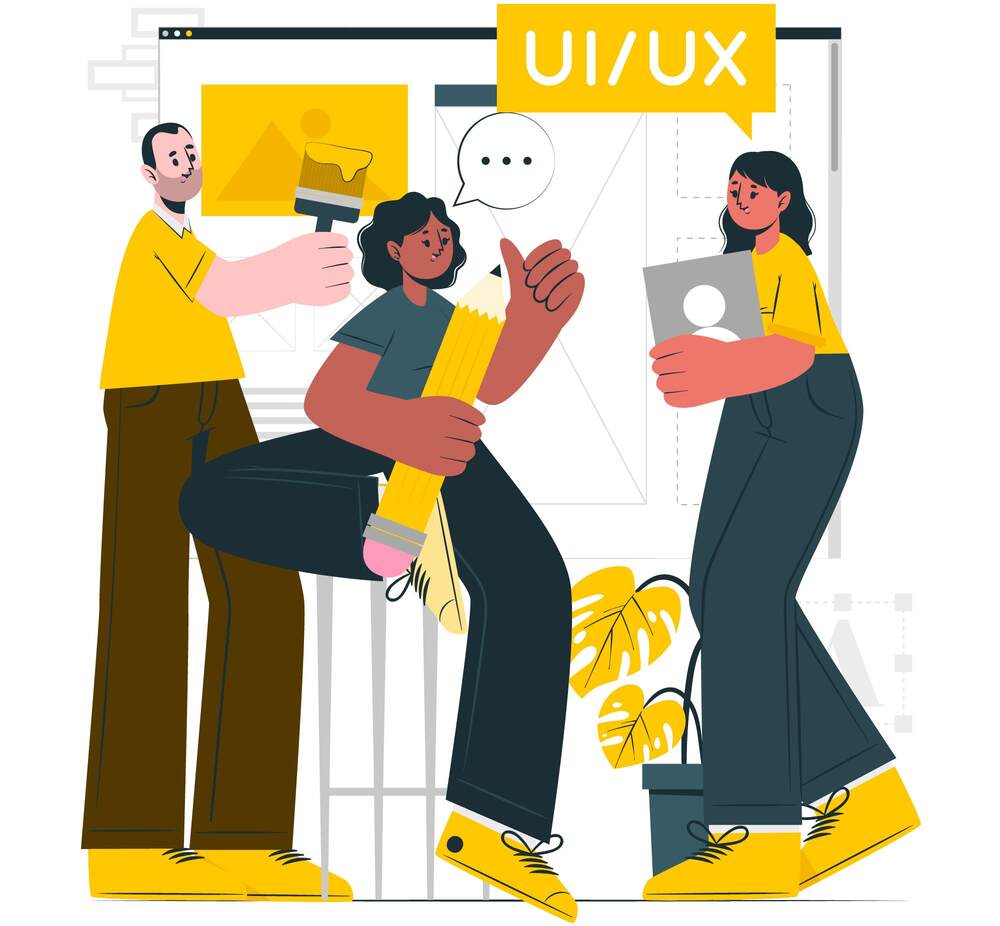
"Learn the essential features to include in your Minimum Viable Product (MVP) for securing funding for your mobile app. Discover how to create a compelling pitch and attract investors."
Mobile app development creating a minimum viable product (MVP) is crucial for securing funding and generating user interest. An MVP is a stripped down version of your app, which contains the most essential features needed to convey its value proposition.
Statistically, 90% of apps downloaded are used just once and abandoned thereafter, stressing the importance of perfecting your MVP in order to grab and retain user attention. In this blog post, we’ll explore the key features that should be included in your MVP to maximize its potential for success in the market.
User Authentication and Security Features
User authentication and security are of paramount importance in today’s digital landscape, where cyber threats are becoming increasingly sophisticated. With a staggering 60% of small businesses failing within six months of a cyber attack, incorporating proper security features in your MVP is a must.
User authentication ensures that only registered users can access the app and their data. The email or phone number verification ensures that the user has access to the email or phone number they used to register and prevents bots or fake accounts from being created.
Key authentication and security features include:
-
Secure user login
Implement strong encryption algorithms (such as bcrypt) to store user passwords and ensure secure communication (HTTPS) between the app and server. Encryption involves encoding sensitive user data, such as passwords and credit card information so that even if a hacker gains unauthorized access to the data, they cannot read it.
This makes it much more difficult for hackers to steal user data, even if they can access it.
-
Two-factor authentication (2FA)
Introduce an additional layer of security to your app by requiring users to verify their identity with a temporary code sent to their registered email or text message. 2FA involves requiring the user to provide a second form of authentication, such as a fingerprint or a code sent to their phone, in addition to their password.
Two-factor authentication makes it much more difficult for hackers to gain access to a user’s account even if they know their password.
-
Role-based access control
Assign different levels of access to specific functionalities within the app based on user roles (e.g., admin, regular user).
-
Firewall and intrusion detection systems
A firewall is a network security system that monitors and controls incoming and outgoing traffic based on predetermined security rules. An intrusion detection system (IDS) is a device or software application that monitors network traffic for signs of malicious activity or policy violations and alerts network administrators or security personnel when threats are detected.
In addition, using secure coding practices is essential to ensure there are no vulnerabilities in the app’s code. This includes keeping the app’s code up-to-date, using the latest security libraries and tools, and regularly testing the app for vulnerabilities. Any discovered vulnerabilities should be patched immediately to prevent them from being exploited by hackers.
Overall, user authentication and security features should be a top priority for any mobile app that handles sensitive information.

User Interface and User Experience Features
User interface (UI) and user experience (UX) are critical components of any app. To create a lasting impression on users and keep them engaged with your app, it is essential to provide a seamless and enjoyable user experience (UX) through an intuitive user interface (UI).
A well-designed app will be intuitive, easy to use, and visually appealing. Users should be able to navigate the app easily and find what they need quickly.
Key UI/UX features to include in your MVP are:
- A clear and concise onboarding process: The onboarding process is the first impression users have of your app, so it’s essential to make it as smooth and straightforward as possible. A clear and concise onboarding process can help users understand how to use your app and what value it provides to them.
- Simple and easy-to-use navigation: Users should be able to navigate your app easily and intuitively. If users can’t find what they’re looking for or get lost in your app’s navigation, they’re likely to abandon it. Simple and easy-to-use navigation ensures that users can find what they’re looking for quickly and efficiently. Make it easy for users to explore the app by implementing a logical layout structure, and offer easily identifiable navigation elements (e.g. menus, buttons, and icons).
- Responsive design: Ensure that your app is compatible with different screen sizes and orientations, as well as being accessible on various devices (smartphones, tablets).
- Responsive design that works on different screen sizes: With the proliferation of different screen sizes, it’s essential to have a mobile app that looks great and works seamlessly on all devices. Responsive design allows your app to adjust to different screen sizes, ensuring that users have a consistent and enjoyable experience no matter what device they’re using.

- Consistent branding and design elements: Consistent branding and design elements create a cohesive and professional look and feel for your app. This can help build trust with users and make them more likely to use your app regularly.
- Interactive elements that engage users: Interactive elements, such as animations, buttons, and other UI elements, can help engage users and make your app more enjoyable to use. Interactive elements can also help users understand how to use your app and what actions they need to take to achieve their goals.
- Quick loading times: Users expect apps to load quickly, and slow loading times can lead to frustration and abandonment. To ensure that your app loads quickly, you can optimize your code, compress images, and use content delivery networks (CDNs).
By incorporating these UI and UX features in your MVP, you can create an app that’s intuitive, visually appealing, and easy to use. This will help ensure that users enjoy using your app and are more likely to recommend it to others.
Core Functionality Features
To deliver value to your users and fulfill your app’s intended purpose, it is crucial to focus on building the core functionalities that will set it apart from the competition. It’s essential to identify the unique value proposition of your app and prioritize the features that make it stand out.
For example, if you’re building a payment processing app, the core functionality could be the ability to accept multiple payment methods, including credit cards, digital wallets, and bank transfers. If you’re building a social media app, the core functionality could be a feature that allows users to share content with each other or create and join groups.
Some of the essential core features to include are:
- Push notifications: Keep users updated with relevant news, offers, or updates through notifications that can be sent even when the app isn’t active.
- Analytics integration: Track and analyze user behavior in the app to gather real-time insights that can help you refine your app and elevate user satisfaction.
- Interoperability: Ensure your app is compatible with third-party services (e.g., social media platforms, payment gateways) and can smoothly integrate with other applications.
- In-app messaging or chat features: In-app messaging or chat features can help users communicate with each other within your app. This can be especially useful for apps that involve collaboration, networking, or dating.
- Location-based services: Location-based services are useful for apps that involve real-world interactions or offer location-specific information. Your MVP should include features that allow users to access location-based services, such as maps, GPS, and geolocation.
- Personalization features based on user data: Personalization features allow your app to provide a tailored experience for each user. Your MVP should include features that allow you to collect and analyze user data, such as their behavior, preferences, and usage patterns, to provide personalized recommendations and content.
By prioritizing core functionality features in your MVP, you’ll create an app that provides real value to users and sets itself apart from competitors. This will help ensure that your app is successful and meets the needs of your target audience.

Analytics and Metrics Features – The Cornerstone of Your MVP
Analytics and metrics play a crucial role in an MVP. These features are essential because they help measure the performance and success of your mobile app, allowing you to make informed decisions about its future development. By closely monitoring these metrics, you can identify what is working well and what needs improvement, ultimately leading to a better overall product.
Here are the most important analytics and metrics features to include in your mobile app MVP:
-
User Acquisition Data
Collecting data on where and how users find your app is crucial for optimizing your marketing strategies and refining your target audience.
-
User Retention Metrics
Tracking the percentage of users who continue to use your app over time will help you identify areas where users are experiencing issues or losing interest.
-
Session Duration and Frequency
Understanding how long users spend in your app and how often they return provides valuable insight into their level of engagement.
-
In-App Behavioral Analytics
Monitoring user behavior within your app, such as which features are most frequently used or where users tend to exit the app, allows you to refine your app’s user experience and increase satisfaction.
-
Conversion Rates
Evaluating your conversion rates, or the percentage of users who complete desired actions, helps you assess your app’s effectiveness in meeting your business objectives.
By tracking user engagement and behavior in your MVP, you’ll be able to make data-driven decisions and continuously improve your app.

Monetization Features – A Key to Sustainable Growth
Monetization features are another critical component of a successful MVP, as they help ensure that your app generates revenue and remains financially sustainable. Investors are likely to take a keen interest in how your app plans to make money, so incorporating effective monetization features into your MVP plays a significant role in securing funding.
Here are some of the most effective monetization features to include in your mobile app MVP:
- In-App Advertising: Displaying advertisements within your app enables you to generate income from advertisers. Utilizing varying ad formats, such as banners, interstitials, or native ads, can maximize your revenue potential.
- Freemium Model with In-App Purchases: Offering a free version of your app with limited features while providing users the option to access premium features or content through in-app purchases can lead to a steady income stream.
- Subscription-Based Model: Requiring users to sign up for a recurring subscription can provide a consistent and predictable revenue stream. This model works particularly well for apps offering ongoing services, such as streaming platforms, news outlets, or productivity tools.
- Paid Download: Charging users upfront for downloading your app is a straightforward approach to monetization. However, be aware that this model may deter some users due to the abundance of free alternatives available.
- Sponsored content or partnerships: Sponsored content or partnerships can provide a significant source of revenue for your app. By partnering with brands or businesses and featuring sponsored content within your app, you can generate revenue while also providing value to your users.
- Commission-based sales or referrals: If your app involves sales or referrals, you can generate revenue by taking a commission on each transaction. For example, if you have a marketplace app, you can take a commission on each sale made through the app.
By including monetization features in your MVP, you’ll demonstrate the potential for revenue generation and profitability to investors. This will help you secure funding and ensure the long-term success of your mobile app.
However, it’s essential to balance monetization and user experience. You don’t want to sacrifice user experience for revenue generation, as this can lead to user churn and a negative reputation. So, make sure to carefully consider how you monetize your app and ensure that it aligns with your user’s needs and expectations.

Summing Up
In conclusion, securing funding for your mobile app requires a well-crafted MVP that demonstrates its potential for success. To achieve this, it’s essential to prioritize key features such as user authentication and security, user interface and experience, core functionality, and monetization.
By including these features in your MVP, you’ll not only create an app that provides value to users but also shows investors its potential for revenue generation and profitability. Remember to strike a balance between monetization and user experience, and to prioritize features that align with your app’s purpose and target audience. With a strong MVP and strategic approach to funding, you can turn your mobile app idea into a successful reality.
Ready to innovate and transform your business? Say hello to CodeBeavers!
If you are looking for ways to bring your product or app ideas to life? We’ve got your back. CodeBeavers has the tools and engineers you need to make your projects come alive. With CodeBeavers, you’ll be able to build faster than ever, deploy code with ease, and scale like never before. Send us your requirements now, and let’s start winning together.




